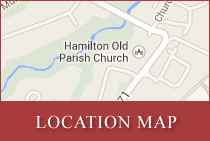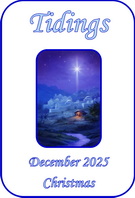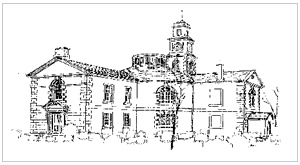 |
| Home | News | Calendar | Church Groups | Publications | History | Contact | Links |
ServicesSunday services at 10.45am Contact Details Website by DM Web Solutions |
Hamilton Old Parish ChurchHistory
This Church, the second oldest building in Hamilton and the oldest still used for its original purpose, was opened for worship over 275 years ago in 1734. The then Lord Hamilton in 1450 applied for permission to build a Collegiate Church, one which was served by a body of clergy called a “College”, some of whom had a teaching function. This was granted and the Collegiate Church of Hamilton was completed in 1462. It stood close to where the Mausoleum stands today as you approach Strathclyde Park. The Collegiate Church continued to be used as a place of worship until 1732 when the 5th Duke of Hamilton had it dismantled in order to improve the Palace Park. It was the Duke’s responsibility to provide a Church for the town, which at the time was expanding southwards. The land on which the new church was constructed was provided by the Aikmans of Ross Estate. They are remembered by a monument in the northwest porch of the church under which members of the Aikman family are interred. The Old Parish Church was designed on classical Italian lines by the famous architect William Adam, father of Robert. Begun in 1732, when the old Collegiate Church was demolished, it took two years to complete, being first used for public worship towards the end of 1734. The original plans reveal that the small dome cupola, which sets off the roof today, was not part of the original design. It was added in 1841. These mid-19th century renovations on the interior and exterior of the building meant that some of the seating was altered and had to be re-allocated. As was the custom in the 18th century, the principal landowner, in this case the Duke of Hamilton, and other heritors had a special gallery set aside in which they and their families could sit. In the Old Parish however, the Burgh Magistrates were also allocated a gallery, in their case, the southeast one. After the re-allocation of the seats in 1841 the Duke contested the right of the Burgh Officials to use the southeast gallery. Perhaps he felt that they now had the best seats, instead of him! The dispute went to the House of Lords, who ruled in favour of the Burgh Magistrates. The chairs which were set aside for the Provost and Baillies are still in place, although they are usually only used on ceremonial occasions such as the Kirkin’ of the Council. The long-term practice of Church of Scotland was to sing only the Metrical Psalms, and later also the Paraphrases, before hymns were introduced. There was no instrumental accompaniment, the singing being led by the “Precentor”. Towards the end of the 19th century pipe organs began to appear in the Church of Scotland, often not without some opposition, and eventually Hamilton Old accepted this dangerous “innovation”. The organ was first installed in the southwest gallery. At that time the gallery extended right round the church and the pulpit had stairways on both sides. The pulpit sound board, with descending dove, comes from the original Collegiate Church. Further alterations were carried out in1925. The organ was removed from the southwest gallery behind the Dukes’ seat and rebuilt in a new oak case behind the pulpit. A new pulpit and oak choir stalls were also provided; the stalls being removed in the 1990s when the chancel was opened up. Communion services are held four times per year. The pews are dressed in white cloths, symbolic of the original practice of communicants sitting at a table to receive the sacrament. Two communion chalices were presented to the church by the Duke and Duchess of Hamilton in 1697, and were in regular use until recently. The baptismal bowl, gifted in 1758, is still used. Pulpit Falls There are four pulpit falls. The first is a “Celebration of Easter”, depicting the events of Jesus’ life from his anointing at Bethany, to Palm Sunday, through Holy Week, to the glory and triumph of Easter Day. It was dedicated in February 1997 – the gift of a daughter in memory of loving parents. The embroiderer was Marilyn E W McGregor. In memory of a husband, father and elder one family gifted our “Sacramental Fall” in 1988. The white dove symbolises the Sacrament of Baptism. The golden tall stalks of grain and the semi-circular chalice and the Greek’T’and TAU Cross represent the Sacrament of Holy Communion. The triangle is symbolic of the Trinity and the golden circle that of marriage. The third pulpit fall was commissioned by the Officers and Boys of the 1st Hamilton Company of The Boys’ Brigade at the start of their Centenary Year and to coincide with the 250th Anniversary of the opening of this present church building. The symbols tell the story of God as Creator, Jesus Christ as Saviour and the Church as God’s people committed to worship and service. The dolphin depicted with the BB Anchor symbolises “The Christian being guided towards salvation by Christ” – the work of The Boys’ Brigade. The final pulpit fall set consisting of a communion table runner, pulpit fall and Bible markers are the work of Midge Gourlay. The runner comprises a range of forty bands of colour which represents going through time, ie the forty days of Lent from Ash Wednesday to the light of Easter and Spring, through Advent to the light of Christmas. On the pulpit fall, the passage of time from Advent and Lent towards the light of Christmas and Easter is represented by diagonal stripes of colour ranging from dark at the base to light at the top of the fall. The gold cross design is picked out from the back of the communion chairs on either side of the pulpit and is intended to float over the design and stand out no matter the level of light in the church. This cross and the two on the runner represent the three crosses of Calvary. There are also two sets of Bible markers designed for Lent and Advent respectively. This complete set was dedicated in memory of three well-known and much respected members of the congregation on 8th February 2009. The embroideries of the second and third falls are the design work of Hannah Frew Paterson MBE, of the School of Embroidery at the Glasgow School of Art. Windows Flanking the pulpit are four painted glass windows, two upstairs and two downstairs, and two other, more modern, stained glass windows face the pulpit downstairs. There are three engraved windows, all by Anita S Pate, one downstairs and two in the gallery. The downstairs window was gifted by Miss Margaret Henderson of Townhill Farm, whose family had been members of the old Collegiate Church and the Old Parish from before 1645. This window was dedicated on Palm Sunday 1995. The theme of the window is “The Church of Scotland”: Reformed; hence the open Bible with Reformers’ text from the First Letter of Peter; Presbyterian; our oldest chalice and baptismal bowl, representing out two Sacraments; National; the map of Scotland on the stem of the chalice. Further up is a world map for our involvement, through Harvest, in the worldwide or Universal Church of Jesus Christ. The second of the engraved windows was dedicated on Palm Sunday 1990 in memory of the Very Rev Dr John A Fraser and his wife Leila. This was a gift from their son and daughter. The window depicts the Old Parish and her five daughter churches in Hamilton. Incorporated in the design are the symbols representing Dr Fraser’s service as an Army and a Queen’s Chaplain, and as Moderator of the General Assembly of the Church of Scotland. The colours of the local branches of the Burma Star Association and the Royal British Legion have been laid up and mounted on the gallery walls. Former colours of the Boys’ Brigade are also laid up; the current colours, gifted by the congregation to mark the centenary of the Company are hung either side of the organ case. On Easter Day 1992 the third engraved window was dedicated in memory of Miss May Orr, a generous benefactor of the Old Kirk. This window tells the history of St Mungo in the 6th century, the 10th century Netherton Cross, the Collegiate Church and the present building. Hanging outside the south east gallery door is a quilt, representing local landmarks presented to the Church by the Cadzow Quilters and there is also a section of roof timber which was sent for testing as it was thought that the hole in it had been made by death watch beetle. However it was discovered that in fact it had been made by lead shot, as the roof timbers had originally come from a man-o’-war. On the back wall are the “Auchingramont Beatitudes”; two brass plaques originally mounted on either side of the pulpit in Auchingramont Church and removed to the Old Parish when the two congregations were united in 1980. In the Churchyard there are two relics of note. At the front of the Church stands the Netherton Cross. This engraved stone Cross is thought to have once stood in front of a Celtic Church in Hamilton Low Parks. It was removed from the Low Parks in the 1920s for safety. The Netherton Cross is regarded as one of the most valuable of pre-Norman Christian relics in Scotland. On the east wall of the Churchyard is a more modern memorial, although it is over three hundred years old. This is the “Heads Memorial”. With its four engraved heads, it commemorates four Covenanters executed at Rullion Green just outside Edinburgh after the Pentland Rising of 1656. The four who were executed had their heads publicly displayed in Hamilton. Another point of interest in the Churchyard is the gate. The iron gates to be seen today are the original mid-18th century ones. Built onto the stone gate post was a small gate-house. The purpose of this was to give protection to the Elders who took Church collections at the gate. On 1st January 2013, a union between the Old Parish and Hamilton North Churches took place. Among the items which were brought to the Old were the banners and pulpit falls which had been designed and made by the North Church’s Banner Group. Many are used regularly in the Church while others are hung on permanent display in The “North Hall” (upstairs in the Church Halls). Please visit the Church Halls, admire the banners and then enjoy tea and biscuits in the Session Room. We would be delighted if you would join us for worship on Sundays at 10.45am. There is a crèche for the youngest children and Sunday Live! for those of school age. office@hamiltonold.co.uk SC 010855
Hamilton Old Parish Church |



